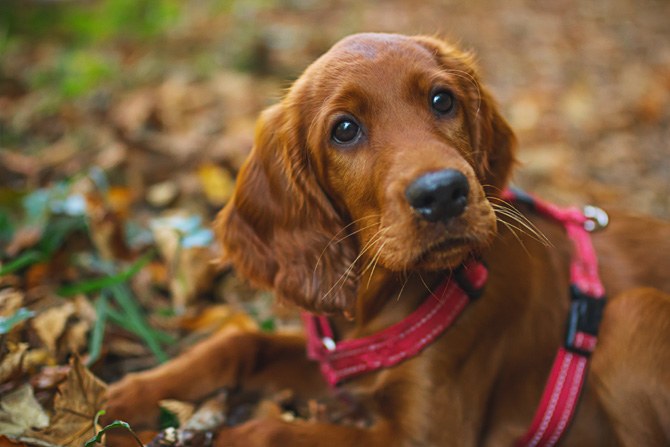Puppies have bags of energy, right? However, it is possible to over-exercise a puppy. As such, it’s important to teach new pet parents how to safely exercise their puppies.
Of course, it’s essential to exercise a puppy regularly. Physical activity is not only good for the health of puppies, but it also helps them become sociable adult dogs.
So, it’s important not to deter a pet owner from exercising their puppy on a regular basis. However, it’s also important they know what safety precautions to take. Here are a few hints to share with new pet parents.
How to exercise a puppy safely
Without a doubt, there is much confusion and debate over the lack of evidence and somewhat over-emphasised concerns about exercising puppies. Nevertheless, it seems the main concern with over-exercising a puppy is that too much physical activity may affect a young pup’s musculoskeletal development. However, it’s worth noting that the concern is much greater for large and giant breed dogs.
So where does this leave us? Well, it pays to know what signs to look out for and steps to take to avoid over-exercising a puppy. Let’s start with a few general tips to safely exercise a puppy.
- Be aware of signs of fatigue. This includes panting, slowing pace, refusing to walk or lagging behind. If a puppy looks tired, allow them to rest awhile.
- Avoid taking a puppy on a very fast-paced walk or a super lengthy walk.
- Start off by walking at the puppy’s pace. Don’t force the puppy to walk at your pace.
- Pet parents should not run a puppy alongside their bike.
- Avoid walking puppies on slippery surfaces, particularly those breeds at risk of joint or hip issues.
- Increase the length of walks gradually and include breaks.
How much and when to exercise a puppy
When it comes to how much exercise a puppy needs it’s important to consider the pup’s breed. Important considerations are the dog’s size, stamina, genetic disorders and even heat tolerance.
For example, Corgis and Dachshunds are predisposed to intervertebral disc problems, so it’s a good idea not to encourage too much jumping.
Likewise, breeds of dogs that are prone to hip dysplasia should not be encouraged to run up and down stairs. Dogs that have inherent cardiac issues, such as Cavalier King Charles Spaniels, should not be over-exercised.
It’s important to remind pet parents that exercise is not only important for physical stimulation but also for mental development. As such, dogs don’t always require a vigorous workout. Training and agility sessions, as well as simple playtimes, can be just as important.
The other vital consideration is the fact that even if a puppy appears capable of strenuous exercise, it doesn’t mean it’s good for them. A Great Dane puppy, for example, may be able to walk many kilometres but you still need to take it easy to avoid injury or developmental issues.
The fact is, the amount of exercise a puppy requires really depends on the dog itself—and this is what pet parents need to be reminded of.
Thankfully, with regards to the question of when to start running a dog, Aussie vet Andrew Spanner advises the following:
- Small breeds: 9 months of age
- Medium breeds: 10 -11 months
- Large breeds: 12 – 14 months
- Giant breeds: 18 – 24 months
Indeed, just like us humans, all dogs are different. It’s important for pet parents to familiarise themselves with their pup and always have the puppy’s best interests in mind when exercising. This will help ensure puppies grow into healthy, happy adult dogs.
Information sources:
- Burke, A. 2017. American Kennel Club. Puppies: How much exercise is too much. Accessed online via: https://www.akc.org/
- Spanner, A. 2019. How much to exercise & run a puppy. Accessed online via: www.walkervillevet.com.au.
Image source: Unsplash.com
Latest posts by Liz Walden (see all)
- Pet health: Medicinal cannabis for pets - December 27, 2021
- What pet business insurance do I need? - November 17, 2021
- Pet sitters: how to take time off - November 15, 2021










Leave A Comment